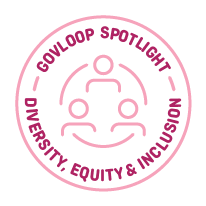Skilled leaders design harmonious teams with balanced and manageable workloads, along with fair opportunities. They do this by implementing mindful delegation and inclusive practices. In these environments, everyone equally pulls together, combining their unique strengths and experiences to accomplish excellent work. Employees are empowered to operate with an understanding of what is expected of them, and no one feels overlooked or over-utilized.

When teams are not operating in this manner, you will often find managers who rely exclusively on their top performers to tackle most of the work. These star performers are routinely invited to meetings and selected first to take on important organizational initiatives. This can be rewarding and career-enhancing for these individuals but can be equally exhausting as well. This exclusive way of managing has the tendency to burn out the high performers while leaving other team members overlooked, underutilized or underperforming.
Leading in this manner creates an exclusive and imbalanced work environment, which can ultimately result in unfunctional cultures, unproductiveness, high turnover and low morale. Managers who seek to create a more fair, inclusive and balanced organization can start by trying these practices.
1. Understand current workloads before assigning more responsibilities by touching base with employees often.
Take into consideration the amount of work already on people’s plates and how they are managing their current workloads. This requires touching base or checking in frequently with employees to determine how they are managing their responsibilities. These quick, routine conversations will help you better assess who is completely overwhelmed with tasks and who is ready to take on new requirements. Think of these check-ins as a way to gauge and manage stress levels and potential burnout. Avoid using frequent check-ins as a means of holding your employee accountable for tasks, as that could be perceived as micromanaging.
I learned the importance of this technique from a home improvement store manager. He shared with me that when he has a list of projects that need to get done, he keeps in mind each person’s workload and considers what is going on with each employee before delegating the work. He attentively keeps an eye out for any employees working longer shifts and ensures they are not assigned a task that will exhaust them. This way of leading helps to ensure the work is being fairly distributed across the team.
2. Delegate thoughtfully by understanding your employees’ interests, strengths and skills, with an understanding that not everyone has had an equal chance to show their true strengths.
To help you apply mindful delegation practices, become aware of your employees’ interests, strengths and skill sets. Make an effort to learn your employees’ genuine professional interests. You may recognize that one of your employees excels at creating effective partnerships. Using this knowledge, you may decide to nominate this employee for a new cross-organizational committee. Consider the requirements of any new task to determine who on the team has the needed expertise and sufficient time to be able to tackle the work. Playing to your employee’s strengths makes the organization run better and leads to higher levels of employee engagement.
It is also important to recognize that not everyone has had an equal chance to show their true skills or strengths. Be mindful that you are not limiting team members based on their past experiences, personalities, strengths or current expertise. If you are unsure of someone’s ability to take over a critical project, have an honest conversation with them to gauge their enthusiasm about the effort and to discuss your genuine concerns. Always set employees up for success, but never limit who can achieve it.
3. Determine how to get your underperformers on the path to success by giving them small, manageable tasks.
You might be overlooking some employees because you feel they are not performing to your standards. If this is the case, establish clear performance expectations and communicate them. When performance is not as expected, you must examine why this is happening then provide some helpful course corrections. Determine how to get them on the path to improvement with mentoring, training or coaching. Hold the employee accountable by addressing the gap between what was expected and what was achieved and share the impact of their behavior.
Try giving them small, manageable tasks to see how they perform and to gain a better understanding of their skills and strengths. When they are successful at completing the smaller projects, start aligning their names to more complex efforts. With this deliberate way of leading, you give employees more guidance with clear objectives and the approval to move forward. In doing this, you might discover that your so-called underperforming employees were cautiously waiting for this direction in the first place.
Discover more practical and thoughtful ways to lead inclusively in the upcoming second part of this post.
You may also be interested in Inclusive Leadership: It Starts With You and Inclusive Hiring Starts With The Right Job Description.
Tessie Davenport has served as a leader in the Department of Defense for the past ten years. Her breadth of experience includes creating successful teams, coaching, mentoring, and leading development programs. She has a B.A.S. in Information and Computer Security, an M.S. in Intelligence Management and a Graduate Certificate in Organizational Management. She hopes to inspire new leaders and experienced ones by offering practical ideas to help them build positive cultures and grow their people.





I really enjoyed this thoughtful piece, Tessie! Supervisors can’t afford to be in robot mode or lead from muscle memory. We have to understand our people, their changing experiences and lead accordingly. It isn’t easy, but the impact is huge.
Thanks for the feedback! I agree completely Nicole. It’s not easy, but it’s also not impossible. Leading inclusively takes a little more thought, observation, reflection, understanding, awareness, and consideration.